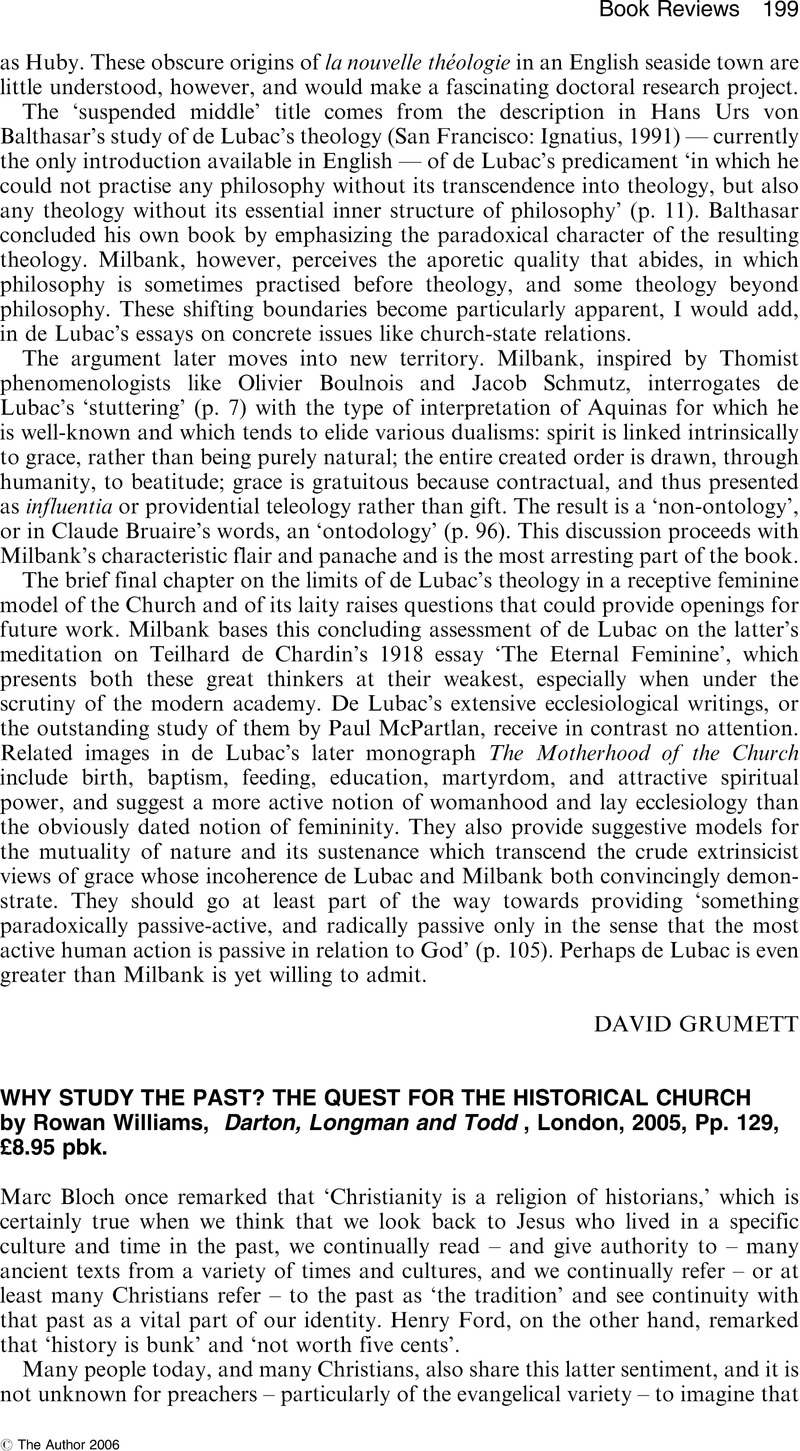No CrossRef data available.
Article contents
Why Study the Past? The Quest for the Historical Church by Rowan Williams, Darton, Longman and Todd, London, 2005, Pp. 129, £8.95 pbk.
Review products
Why Study the Past? The Quest for the Historical Church by Rowan Williams, Darton, Longman and Todd, London, 2005, Pp. 129, £8.95 pbk.
Published online by Cambridge University Press: 01 January 2024
Abstract
An abstract is not available for this content so a preview has been provided. Please use the Get access link above for information on how to access this content.

- Type
- Reviews
- Information
- Copyright
- © The Author 2006


